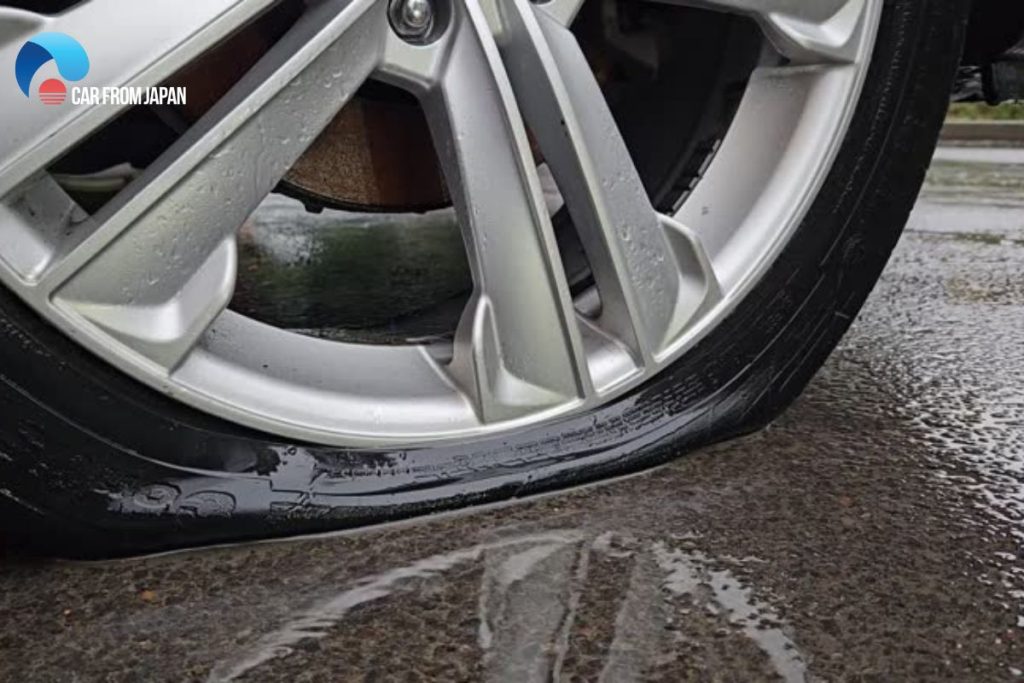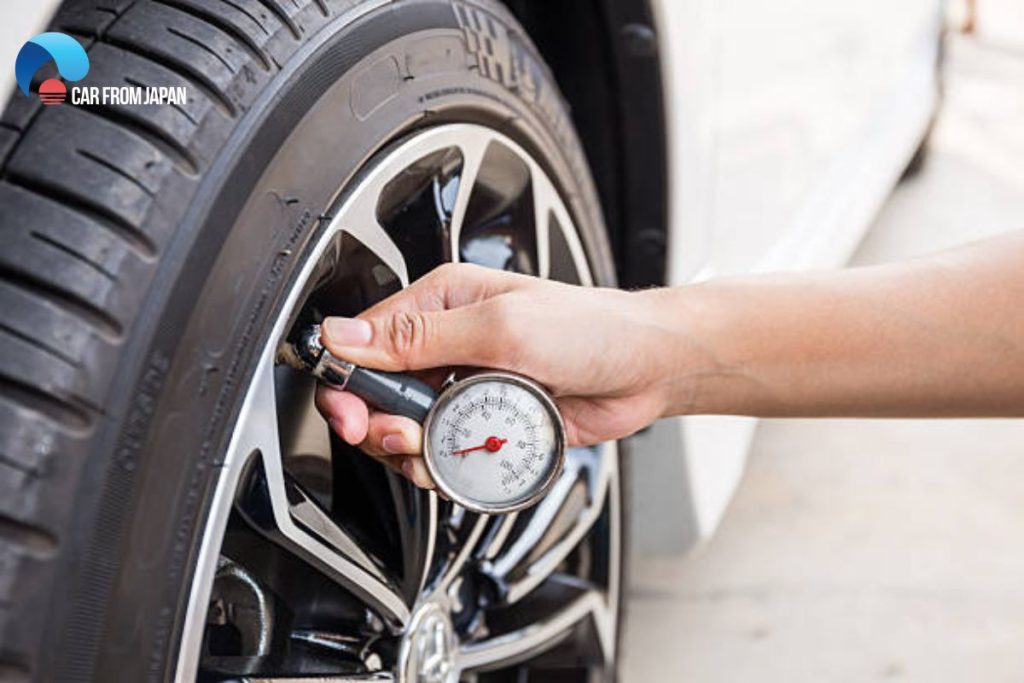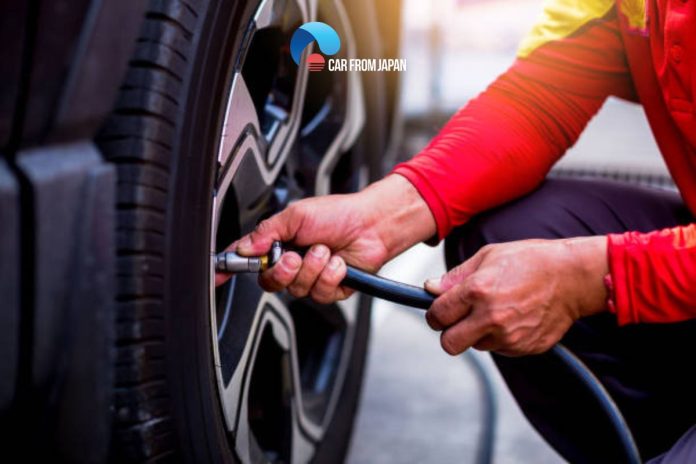It is in this article that one might wonder about how often should you put air in your tires to maintain their proper functioning.
You might not notice but the air pressure in your car can change drastically depending on the outside temperature.
In winters, the cold temperature can cause a drastic fall in the tire pressure as much as five pounds of PSI (pounds-per-square-inch).
The majority of car tires require a PSI between 30 and 40, so losing something as small as 5 PSI would bring a drastic change. If there is no change made in this situation, then it can lead to a major issue.
Contents
- How Often Should You Put Air in Your Tires – Read Here
- How to Check Your Tire Pressure Correctly (The 3 Simple Steps)
- FAQs
- What happens if I drive with underinflated tires?
- How do I check the air pressure in my tires?
- Should I check tire pressure when the tires are cold or hot?
- What if my tires lose air more frequently than expected?
- Can I overinflate my tires?
- Are there any signs that my tires need air without using a gauge?
- Is it essential to rotate my tires regularly?
- Can I inflate my tires at home, or should I go to a gas station?
- Final Note
How Often Should You Put Air in Your Tires – Read Here
In the past, it was a necessity to carry a tire gauge to check the air pressure of the car tires. However, with the advancement in automobile technology, one can easily keep track of the pressure in their vehicle tires.
Your vehicle can easily tell you when the tire needs an air refill, so you need not always rely on technology. Let us dive a bit deeper into when is the right time to know what is the right time to fill the air in your car tires.
You can also browse online to learn the best maintenance tips for your car tires. Let us now understand the situations in which the tires might need some extra air pressure.
1. What factors decide when my car tires need air?
The answer to your question depends on a number of different factors, including the driving pattern, size, and load on the tires.
Automobile manufacturers often mention the recommended inflation pressure of the tires on the door jam or in the glove box.
However, a change in the brand or type of tires can often confuse you as to how often should you put air in tires of your vehicle. We will provide you with complete information on this issue.

2. Tire PSI and tire pressure
The common PSI for passenger cars, mini-pickup trucks, and cars ranges from 27 to 32. On the other hand, the PSI for a full-size SUV and pickup lies from 5 to 8 PSI, but it is to accommodate the heavy size and weight.
Another important component, which decides how often you need to fill the air in the car tires, includes the tire pressure. The tire pressure in the front tire can vary from the rear tires.
Car experts recommend that you should add some extra pressure, which will also offer better car fuel economy, as it will decrease the rolling resistance of the tires.
3. The extra load
In case you carry extra cargo or carpool, it is recommended to fill in some extra air to the rear tires to offset the added weight.
Whenever you add extra pressure to the tires in any of the circumstances above, do not exceed the level as provided by the car manufacturer. The one set provides the maximum pressure for which they designed the tire.
If you try to add extra weight beyond what the manufacturer recommends, it can lead to tire failure and damage.
How to Check Your Tire Pressure Correctly (The 3 Simple Steps)
This is easy, and anyone can do it. Here’s how to get it right.
Step 1: Find the right PSI

This is the most important step. The correct pressure for your car is NOT the “Max Pressure” number molded into the tire’s sidewall. The right number is on the sticker on the driver’s side door jamb or inside the fuel door. That sticker tells you the specific pressure the car manufacturer recommends for a safe and comfortable ride.
Step 2: Use a good Gauge
The built-in gauges on gas station air compressors are often inaccurate from being dropped and abused. A simple pencil-style or digital tire pressure gauge from an auto parts store is cheap and much more reliable.
Step 3: Check them cold
For the most accurate reading, always check your tires in the morning before you’ve driven anywhere, or at least after the car has been parked for a few hours. Driving heats up the air inside your tires, which increases the pressure and will give you a false, high reading.
FAQs
What happens if I drive with underinflated tires?
Underinflated tires can lead to reduced fuel efficiency, poor handling, increased tire wear, and an increased risk of blowouts. It’s essential to maintain proper tire pressure for safety and performance.
How do I check the air pressure in my tires?
You can check your tire pressure using a tire pressure gauge. Remove the valve cap, press the gauge onto the valve stem, and read the pressure displayed. Compare it to the recommended pressure in your owner’s manual or on the sticker in your door jamb.
Should I check tire pressure when the tires are cold or hot?
It’s best to check tire pressure when the tires are cold because driving generates heat, which can temporarily increase tire pressure. Cold tire pressure measurements are more accurate.
What if my tires lose air more frequently than expected?
If you find your tires are losing air frequently, it may indicate a puncture or leak. Inspect your tires for nails, screws, or other objects and have any issues repaired promptly.
Can I overinflate my tires?
Yes, overinflating your tires can be dangerous. It may lead to a harsh ride, reduced traction, and an increased risk of a blowout. Always follow the recommended tire pressure guidelines.
Are there any signs that my tires need air without using a gauge?
Yes, some signs of underinflated tires include poor handling, reduced fuel efficiency, a rough ride, or visible tire sidewall damage. However, it’s best to use a tire pressure gauge for accurate measurements.
Is it essential to rotate my tires regularly?
Yes, rotating your tires regularly helps ensure even tire wear. This can extend the life of your tires and improve overall vehicle performance. Check your vehicle’s owner’s manual for recommended rotation intervals.
Can I inflate my tires at home, or should I go to a gas station?
You can inflate your tires at home if you have a tire pressure gauge and an air compressor. Many gas stations also provide free or low-cost air pumps for filling tires.
Check out this video from Master Tech Lou to learn how to put air in a tire!
Final Note
Hence, we recommend that you regularly check the tire pressure of your vehicle, as it can leak air quickly.
A loss in the air during driving compounds to half a pound a month, if you notice more than this, then it is time for you to refill the air in the tires.
Thus, we hope that this blog has provided the answer to how often should you put air in your tires.



